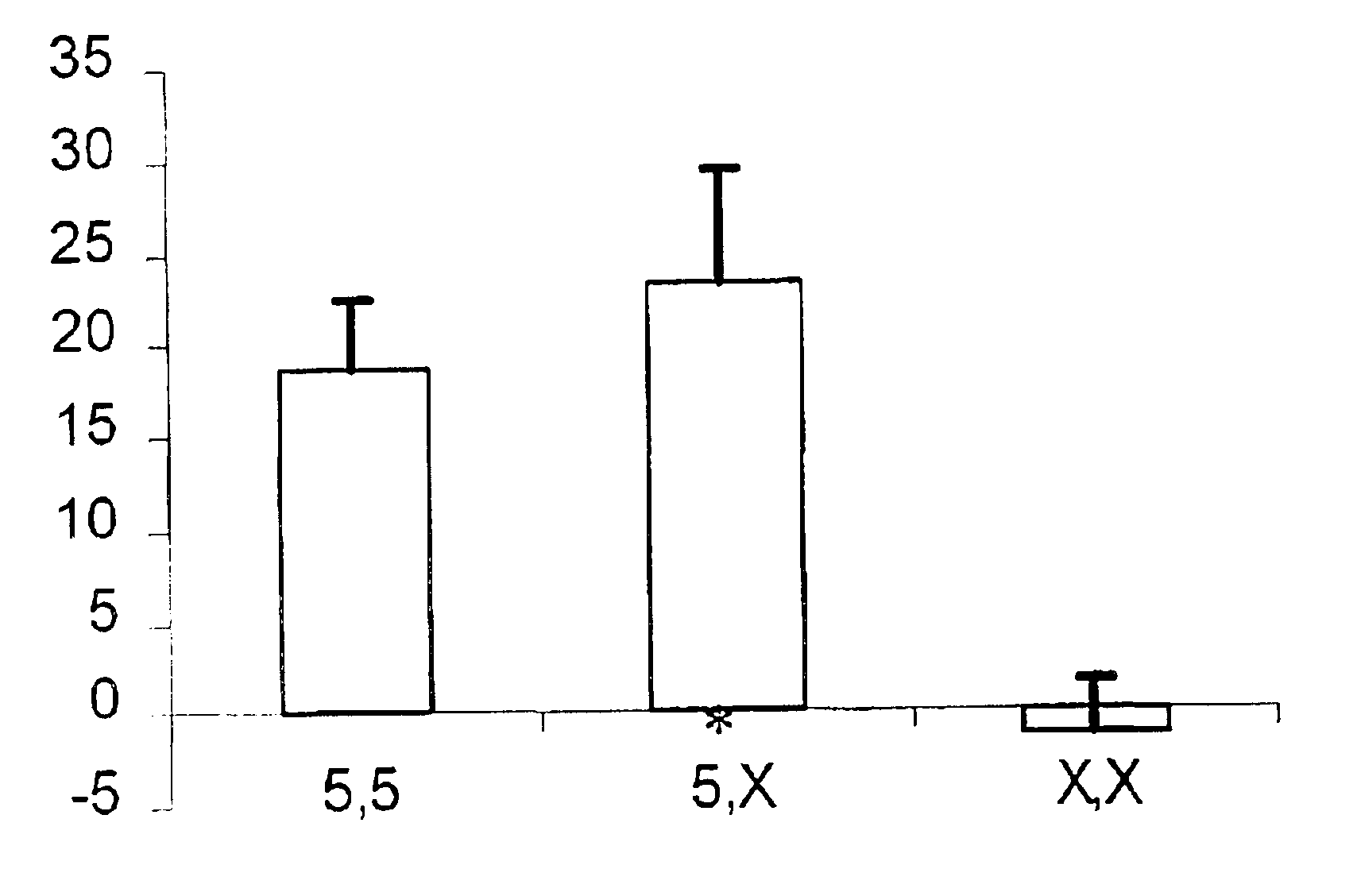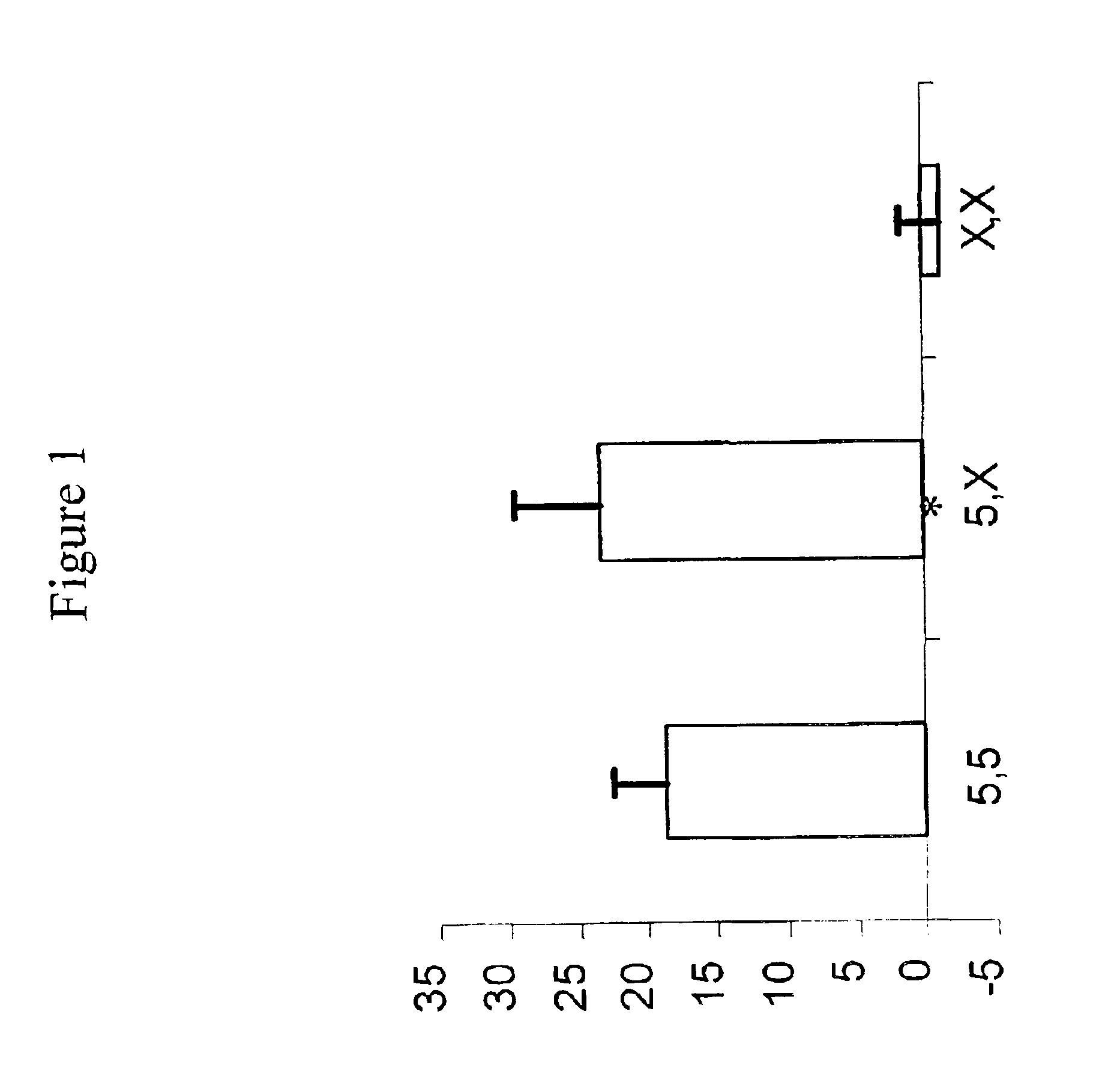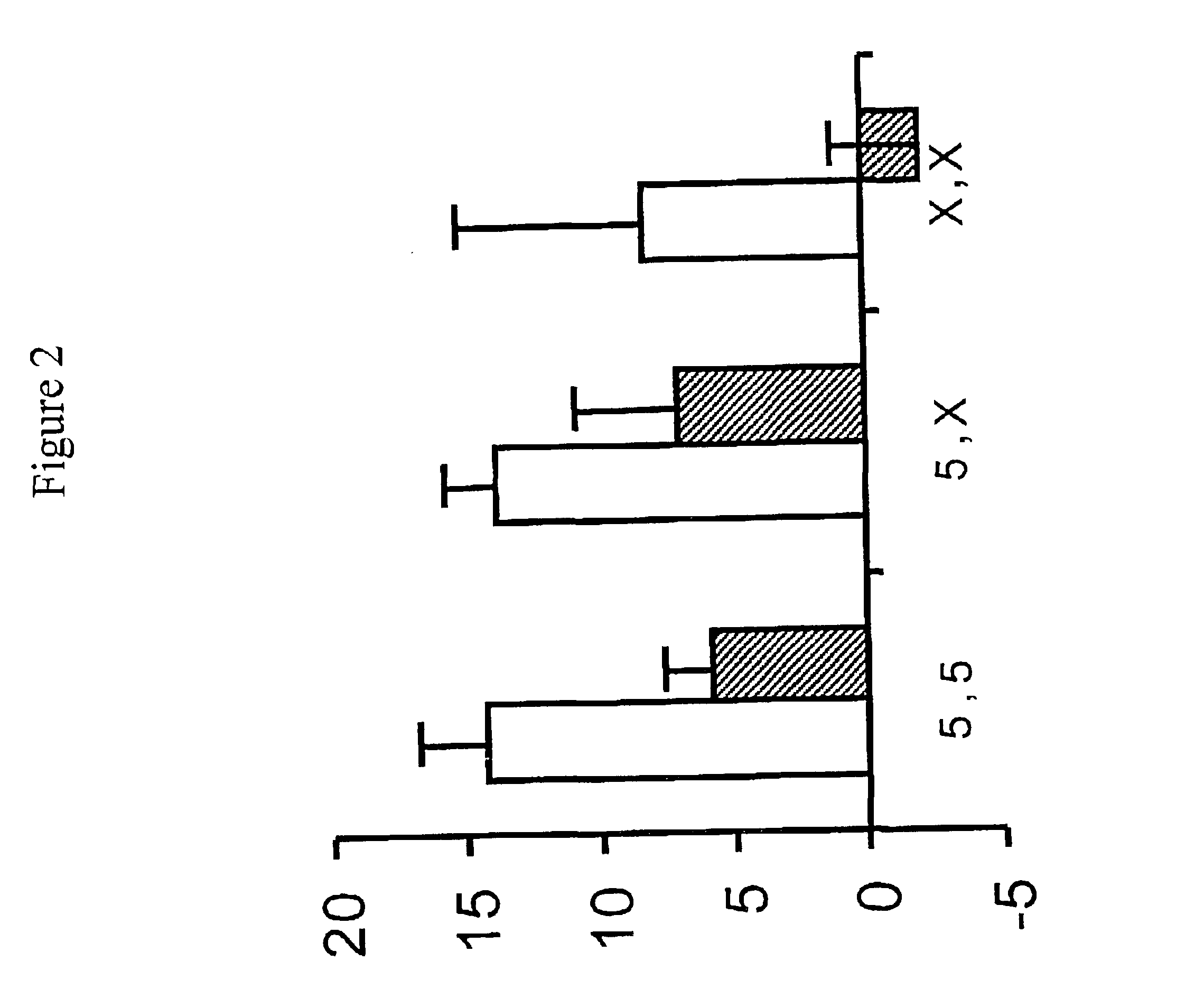Medicine response assay in respiratory disease
a technology of medicine response and respiratory disease, which is applied in the field of polymorphisms in genes, can solve the problems of greatly reduced response to compounds, and achieve the effect of maximizing the likelihood of therapeutic response and minimizing the likelihood of adverse events
- Summary
- Abstract
- Description
- Claims
- Application Information
AI Technical Summary
Benefits of technology
Problems solved by technology
Method used
Image
Examples
example 1
Effects of Polymorphisms in the Promoter Region of 5-Lipoxygenase and LTC4 Synthase on the Clinical Response (Phenotypic Response) to Zafirlukast and Fluticasone
[0089]Asthma subjects were genotyped by two distinct polymorphisms in the promoter regions of 5-lipoxygenase (ALOX5) and LTC4 synthase (LTC4S) genes. The polymorphisms were: the number of Sp1 repeats (n=3, 4, 5 or 6) in the approximate region of 176 to 147 base pairs upstream from the ATG start site in ALOX5 (Sp1), and an adenine to cytosine transversion 444 nucleotides upstream from the first codon in LTC4S (A-444C). Genomic DNA was isolated from blood samples obtained from consenting subjects participating in a 12 week multicenter, randomized, double-blind, double-dummy, parallel study comparing inhaled fluticasone (88 mcg BID) and oral zafirlukast (20 mg BID). Genomic DNA was extracted using standard procedures (automated extraction or using kit formats). The genotypes of the subjects, and any control individuals utilized...
example 2
ALOX5 Polymorphisms at Nucleotide Positions 1728 and 1708 Response to Zafirlukast and Fluticasone
[0101]The A to G transversion polymorphism at position 1728 in exon 13 of the ALOX5 gene, and the G to A transversion polymorphism at position-1708, were studied for any association with the FEV1 response to zafirlukast, compared to the inhaled glucocorticoid fluticasone. Both polymorphisms are set forth in In, KH et al., J. Clin. Investigation 99 (5):1130 (1997), the entire disclosure of which is incorporated herein by reference.
[0102]Genotyping was carried out on subjects with asthma participating in a 12 week randomized, double blind, parallel study of fluticasone (88 mcg BID) and the leukotriene receptor antagonist zafirlukast (20 mg BID). Predose FEV1 results (change from baseline in percent predicted) are shown in Table 3.
[0103]
TABLE 3FluticasoneZafirlukastGenotypeG1708AG / G15.0 ± 2.34.7 ± 1.9*n = 50n = 46G / A12.7 ± 2.38.5 ± 3.5n = 26n = 18A / A—0.7 ± 2.2n = 0n = 4GenotypeA1728GA / A13.6...
PUM
| Property | Measurement | Unit |
|---|---|---|
| frequency | aaaaa | aaaaa |
| frequencies | aaaaa | aaaaa |
| width | aaaaa | aaaaa |
Abstract
Description
Claims
Application Information
 Login to View More
Login to View More - R&D
- Intellectual Property
- Life Sciences
- Materials
- Tech Scout
- Unparalleled Data Quality
- Higher Quality Content
- 60% Fewer Hallucinations
Browse by: Latest US Patents, China's latest patents, Technical Efficacy Thesaurus, Application Domain, Technology Topic, Popular Technical Reports.
© 2025 PatSnap. All rights reserved.Legal|Privacy policy|Modern Slavery Act Transparency Statement|Sitemap|About US| Contact US: help@patsnap.com



